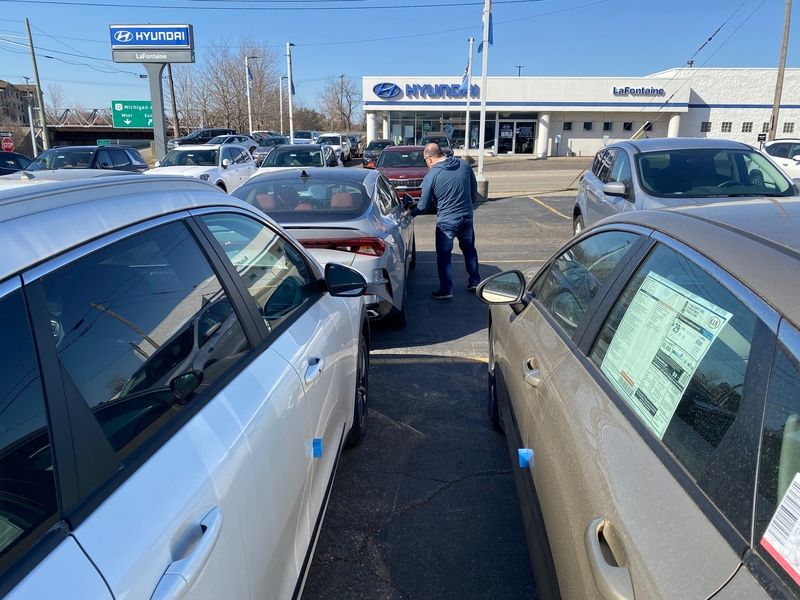
Industry inventory shortages are wreaking havoc on new- and used-vehicle auto finance trends, which show the average cost of vehicles dropped last month even while the average interest charged on auto loans rose.
The rise in the average interest rate on new vehicles amid declining monthly payments is explained by the inventory constraints hampering truck and SUV sales, said Edmunds senior analyst Ivan Drury. March sales favored Asian automakers, whose product mix tends to transact at lower price points than those of the Detroit 3.
“With the mix changing so drastically year over year, it’s not too surprising,” Drury told Automotive News. “Because of the shortage, we’ve seen a reduction in what’s out there for consumers, even though credit’s cheap.”
The average interest rate charged on new-vehicle loans last month rose slightly to 4.6 percent, though it remained down from March 2020’s average of 5.8 percent, according to Edmunds. The monthly payment dipped $6 from February’s average, and rose $1 compared with the previous year’s $573 average.
Used-vehicle supply faced the same constraints as the new-vehicle market. The volume of trade-ins and fleet vehicles entering the market slowed to a trickle in the past year. The market anticipated vaccine rollouts would rectify pandemic-specific vehicle production issues, Drury said, but “only one of those things happened. We got vaccines, but we didn’t get the production that we expected.”
Without new vehicles funneling into the used market, and nearly-new vehicles being in short supply, values of remaining inventory remain high. The average used-vehicle interest rate jumped to 8.5 percent from 7.8 percent in February. That’s still down from 2020’s March figure of 9.1 percent, as the Federal Reserve worked to reverse years of interest rate increases.
On March 3, 2020, ahead of major coronavirus closures, Federal Reserve Chairman Jerome Powell reduced the federal funds rate to a range of 1.00 to 1.25 percent from 1.5 to 1.75 percent. On March 31 of last year, that was further reduced to its current range of 0 to 0.25 percent.
Stimulus checks and upcoming tax returns likely helped offset the rising cost of used vehicles. Down payments on used-car financing jumped 31 percent to $3,460, Drury said.
Normalized auto finance trends won’t be in the cards for some time, Drury said. The chip shortage remains the tallest hurdle — and herd immunity, a rejuvenated gig economy and lower unemployment figures will need to stabilize as well.
“There’s no real one solution. Everything has to come together in a tidy bow before everyone’s going to be happy,” Drury said. “We’re talking like six months — some people are talking over a year — until we can actually get everything in alignment.”